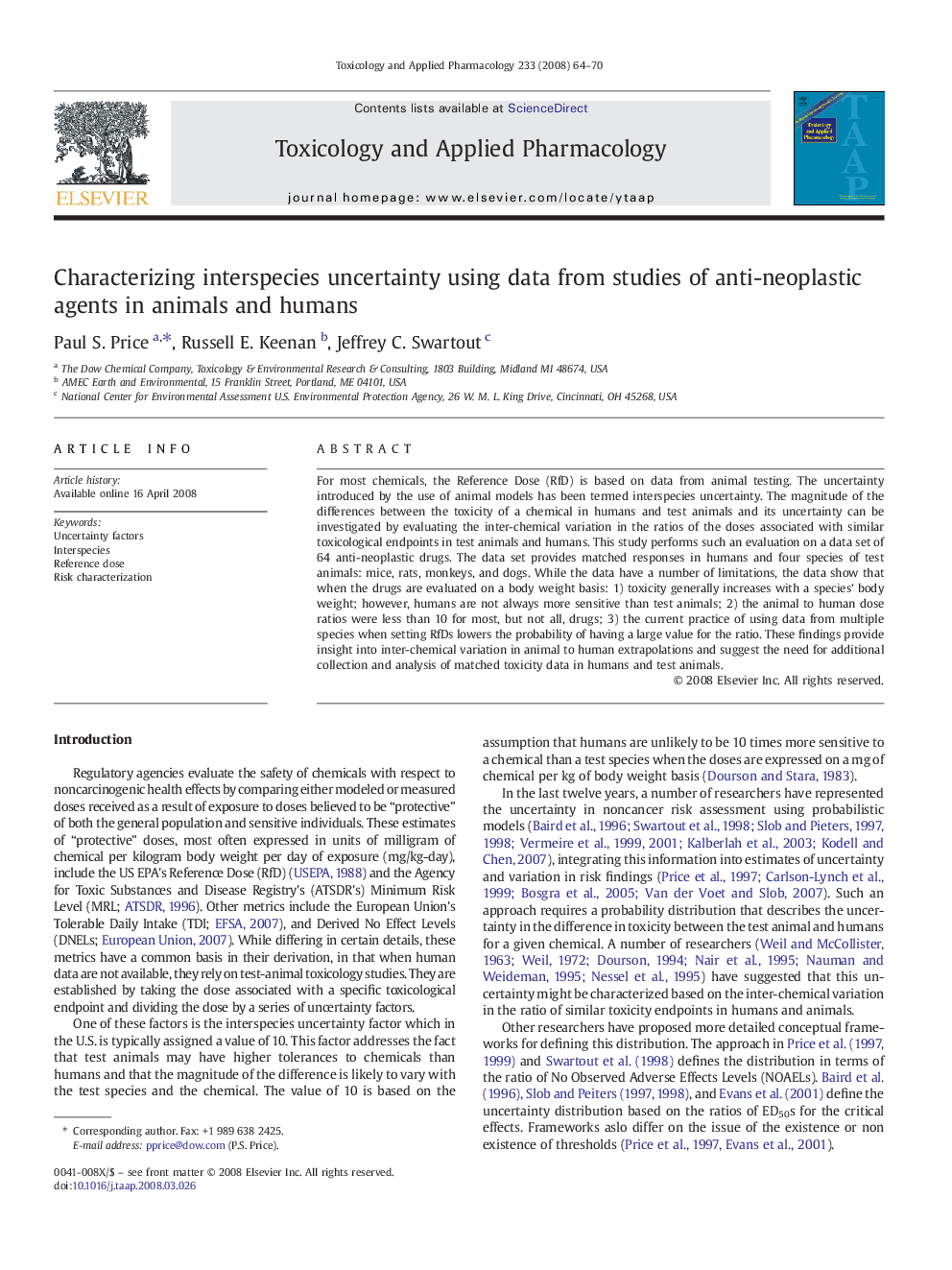| Article ID | Journal | Published Year | Pages | File Type |
|---|---|---|---|---|
| 2570934 | Toxicology and Applied Pharmacology | 2008 | 7 Pages |
For most chemicals, the Reference Dose (RfD) is based on data from animal testing. The uncertainty introduced by the use of animal models has been termed interspecies uncertainty. The magnitude of the differences between the toxicity of a chemical in humans and test animals and its uncertainty can be investigated by evaluating the inter-chemical variation in the ratios of the doses associated with similar toxicological endpoints in test animals and humans. This study performs such an evaluation on a data set of 64 anti-neoplastic drugs. The data set provides matched responses in humans and four species of test animals: mice, rats, monkeys, and dogs. While the data have a number of limitations, the data show that when the drugs are evaluated on a body weight basis: 1) toxicity generally increases with a species' body weight; however, humans are not always more sensitive than test animals; 2) the animal to human dose ratios were less than 10 for most, but not all, drugs; 3) the current practice of using data from multiple species when setting RfDs lowers the probability of having a large value for the ratio. These findings provide insight into inter-chemical variation in animal to human extrapolations and suggest the need for additional collection and analysis of matched toxicity data in humans and test animals.
